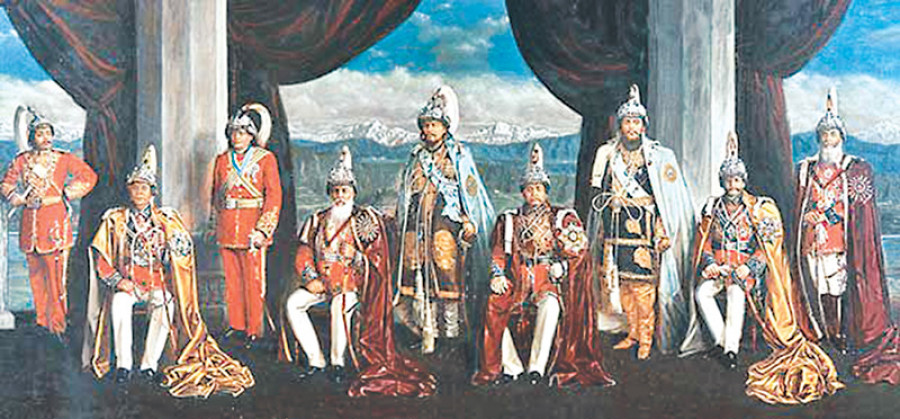Rana Rule of Nepal

Jung Bahadur Rana was the first ruler from this dynasty. Rana rulers were titled "Shree Teen"
and "Maharaja", whereas Shah kings were "Shree Panch" and "Maharajadhiraja". Jung Bahadur
codified laws and modernized the state's bureaucracy.In the coup d'état of 1846, the nephews
of Jung Bahadur and Ranodip Singh murdered Ranodip Singh and the sons of Jung Bahadur,
adopted the name of Jung Bahadur and took control of Nepal. Nine Rana rulers took the
hereditary office of Prime Minister. All were styled (self proclaimed) Maharaja of Lamjung and
Kaski.The Rana regime, a tightly centralized autocracy, pursued a policy of isolating Nepal from
external influences. This policy helped Nepal maintain its independence during the British
colonial era, but it also impeded the country's economic development and modernisation. The
Ranas were staunchly pro-British and assisted the British during the Indian Rebellion of 1857
and later in both World Wars. At the same time, despite of Chinese claims, the British
supported Nepalese independence at the beginning of the twentieth century.[28] In December
1923, Britain and Nepal formally signed a "treaty of perpetual peace and friendship"
superseding the Sugauli Treaty of 1816 and upgrading the British resident in Kathmandu to an
envoy.
Slavery was abolished in Nepal in 1924 under premiership of Chandra Shamsher Jang Bahadur
Rana.
Following the German invasion of Poland, the Kingdom of Nepal declared war on Germany on
September 4, 1939. Once Japan entered the conflict, sixteen battalions of the Nepali Army
fought on the Burmese front. In addition to military support, Nepal contributed guns,
equipment as well as hundreds of thousand of pounds of tea, sugar and raw materials such as
timber to the Allied war effort.
